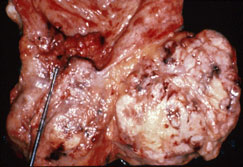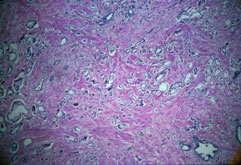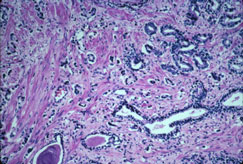|
|
|||||||||||||
|
This was developed by Alexander G. Izaguirre & Dr. Anthony Grygotis |
|||||||||||||
| [Lab 6] [Slides 73] [Slides 25] [Slides 66] [Slides 28] [Slides 16] [Slides 57] [Slides 91] [Slides 43] [Slides 23] |
|
28.PROSTATE: ADENOCARCINOMA PERTINENT CHANGES:
|
|
|
||||||||||||||||||||||||||||||||||||||||||
| [Lab 6] [Slides 73] [Slides 25] [Slides 66] [Slides 28] [Slides 16] [Slides 57] [Slides 91] [Slides 43] [Slides 23] |
|
Pathology Course Menu | Pathology | NJ Med. P.C. | NJMS | Search | UMDNJ Please direct comments and questions about the Pathology Medical Student pages to izaguial@umdnj.edu Thank You |


